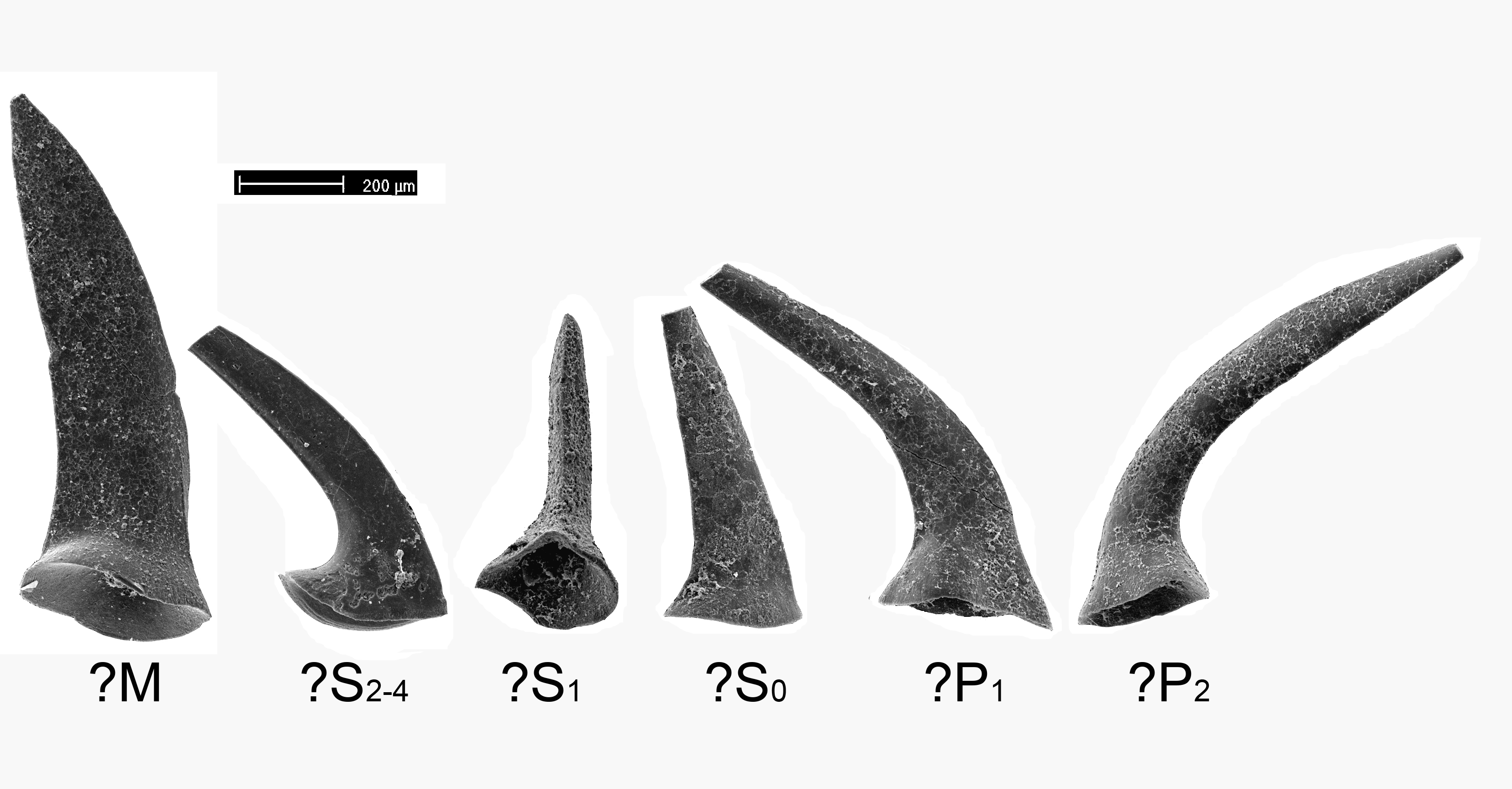Jablonnodus erectus
Sugerowana cytacja: Dzik J. 2014. Jablonnodus erectus Dzik J. 2006. Ikonoteka (http://ikonoteka.paleo.pan.pl/xwiki/bin/viewrev/Species/Jablonnodus+erectus+)
Diagnoza Possible M elements with erect cusp, bases of most elements with irregularly eye drop contour. Porównanie Sample Ost-265 offers enough material to allow identification of discrete element types and their homology with those of the stratigraphically older J. oistodiformis. Probable P1 elements bear wide sharp ridges and have a characteristic outline of the base, acutely narrowing at ends and swollen in the middle but with one side strongly depressed. Such a depression is present in the outline of the otherwise rounded base of rather gracile probable P2 elements. Elements of the symmetry transition series are similar to those of J. oistodiformis except for being somewhat more robust; probable M elements are less inclined. From the other species of the genus, J. erectus differs in the shape of possible M elements and the wide cusp of probable P2 elements. Their basal cavity is relatively shallow and wide. P elements show also a characteristic external extension of the base. Autekologia Występowanie geograficzne Possibly the top of the K. crepida Zone at Jabłonna, the C. marginifera and P. trachytera Zone at Łagów, the L. styriacus Zone at Ostrówka, Miedzianka, and Ściegnia; the P. jugosus Zone at Kowala and Ostrówka. Zasięg czasowy Materiały muzealne 937 specimens ZPAL Literatura Dzik, J. 2006. The Famennian "Golden Age" of conodonts and ammonoids in the Polish part of the Variscan sea. Palaeontologia Polonica 63, 1-359. |
|




